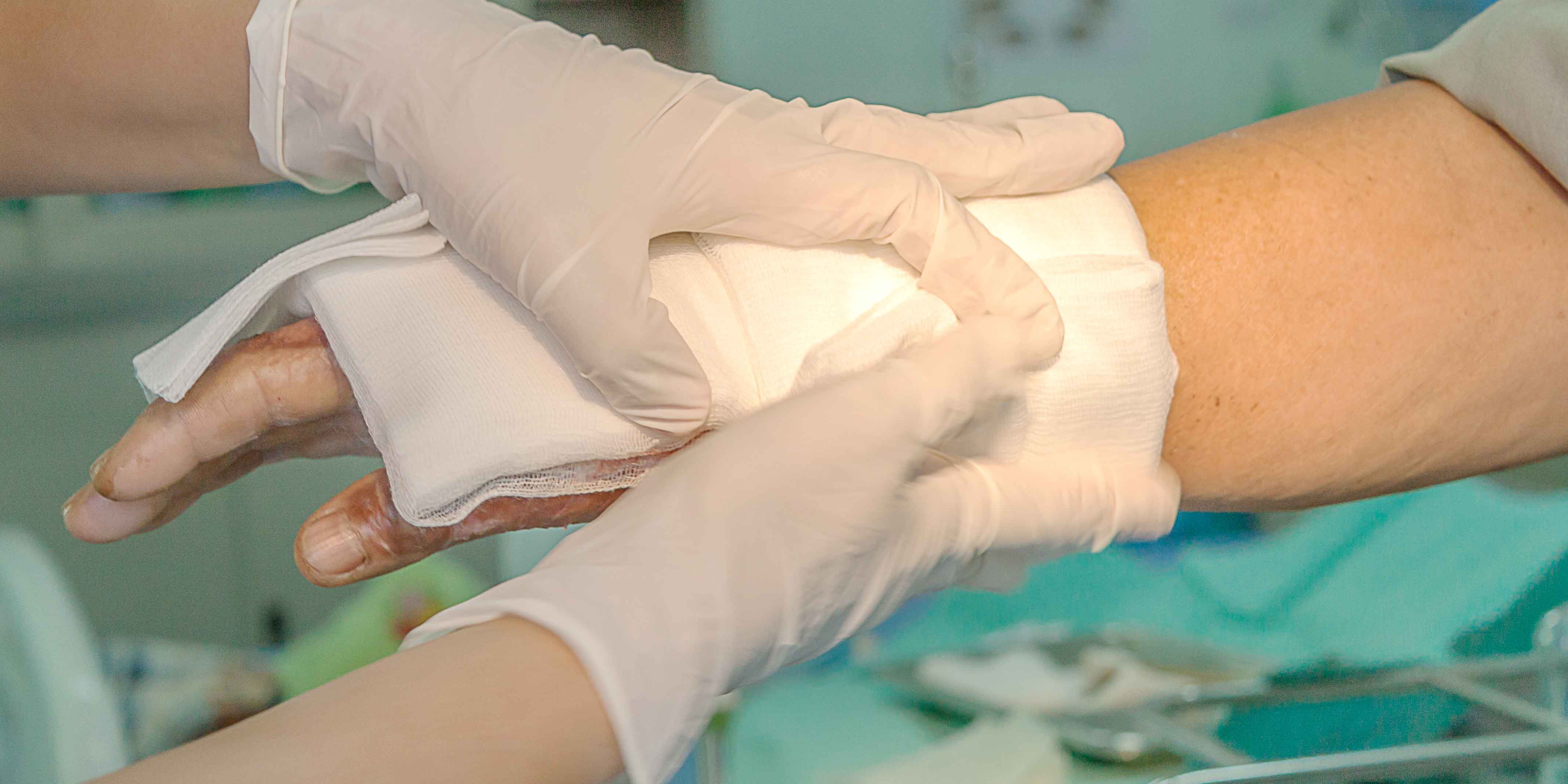Printing human skin to heal large wounds might sound like something straight out of science fiction, but patients suffering from chronic wounds and pressure ulcers soon might have access to this treatment.
Scientists at Wake Forest Institute for Regenerative Medicine in North Carolina have created the first mobile skin bioprinting system, which will allow bi-layered skin to be printed directly into a wound.
“The unique aspect of this technology is the mobility of the system and the ability to provide on-site management of extensive wounds by scanning and measuring them in order to deposit the cells directly where they are needed to create skin,” Sean Murphy, PhD, a WFIRM assistant professor, said in a news release.
Murphy was the lead author of a paper published earlier this year in Nature’s Scientific Reports journal.
How the skin bioprinting system works
Chronic, large or non-healing wounds affect millions of Americans and can be costly to care for because of the need for multiple treatments.
The way the bioprinter works is by isolating major skin cells, known as dermal fibroblasts and epidermal keratinocytes, from a small biopsy of healthy tissue and expanding those cells.
Fibroblasts are essential for collagen formation and play a critical role in wound healing. Keratinocytes are found in the epidermis, the outermost layer of the skin.
After being mixed into a hydrogel and placed in the bioprinter, the wound is scanned via integrated imaging technology and that data is fed into a software program, according to the news release.
Then the bioprinter deposits the cells directly into the wound, replicating the layered skin structure and accelerating the formation of normal skin structure and function.
Although skin grafts are typically used for healing wounds, there often is not enough healthy skin to harvest, making it challenging to adequately cover the wound.
Donor skin grafts also pose a challenge because of the risk of immune rejection and scar formation.
Researchers believe the bioprinting system, which will need to undergo a clinical trial in humans, could resolve those issues because the patients’ own cells would be used, resulting in tissues being accepted instead of rejected.
“The technology has the potential to eliminate the need for painful skin grafts that cause further disfigurement for patients suffering from large wounds or burns,” WFIRM Director Anthony Atala, MD, co-author of the paper, said in the release. “A mobile bioprinter that can provide on-site management of extensive wounds could help to accelerate the delivery of care and decrease costs for patients.”
What else is new in wound care technology?
Other new discoveries in wound care include an e-bandage that generates an electric field over a skin injury.
The bandage has been shown to dramatically reduce healing time for skin wounds in rats, according to the American Chemical Society.
The ACS website said although the concept of generating an electronic field to speed healing has been around since the 1960s, the treatment often involves hospital stays because of the large size of the equipment.
Researchers wanted to create a small, flexible bandage that could convert skin movements into a therapeutic electric field.
The e-bandage is powered by a wearable nanogenerator created by overlapping sheets of polytetrafluoroethylene, copper foil and polyethylene terephthalate.
Researchers at Salk Institute in La Jolla, Calif., recently created a technique to convert the cells in an open wound into new skin cells. The findings were published in the journal Nature.
“Our observations constitute an initial proof of principle for in vivo regeneration of an entire three-dimensional tissue like the skin, not just individual cell types as previously shown,” Salk Professor Juan Carlos Izpisua Belmonte, holder of the Roger Guillemin Chair and senior author of the new paper, said in a news release. “This knowledge might not only be useful for enhancing skin repair but could also serve to guide in vivo regenerative strategies in other human pathological situations, as well as during aging, in which tissue repair is impaired.”
Learn more about wound care today with one of our courses.
What do you think?

